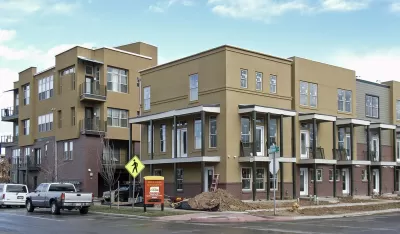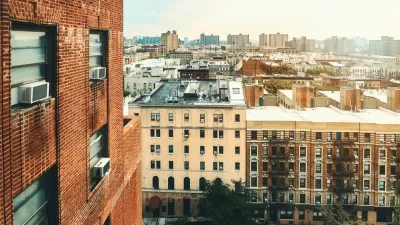Prices remain depressed in most formerly redlined neighborhoods, but several such areas in Denver now boast higher home values than the city as a whole.

In Denver, Joe Rubino writes, several "Formerly redlined areas such as Five Points, Baker, Highland and Jefferson Park — as well as, notably, part of Cherry Creek, one of the city's toniest neighborhoods — now have a higher combined median home value than the city as a whole."
The piece draws on data from a Zillow study on home values in formerly redlined neighborhoods across the country. Zillow "used maps produced by the Home Owners' Loan Corp., the New Deal-era federal agency that told banks which neighborhoods in their cities were the highest lending risks — rendering 'hazardous' areas in red, or 'redlining' them."
Nationwide, homes in those areas tend to have median values around $50,000 lower than those in surrounding neighborhoods. But in places facing gentrification, the math is different. Of Denver's situation, Rubino writes, "many black and Latino renters in these now desirable neighborhoods have had to make tough decisions in recent years on where they can afford to live as rents and home prices have risen."

Trump Administration Could Effectively End Housing Voucher Program
Federal officials are eyeing major cuts to the Section 8 program that helps millions of low-income households pay rent.

Planetizen Federal Action Tracker
A weekly monitor of how Trump’s orders and actions are impacting planners and planning in America.

Ken Jennings Launches Transit Web Series
The Jeopardy champ wants you to ride public transit.

Rebuilding Smarter: How LA County Is Guiding Fire-Ravaged Communities Toward Resilience
Los Angeles County is leading a coordinated effort to help fire-impacted communities rebuild with resilience by providing recovery resources, promoting fire-wise design, and aligning reconstruction with broader sustainability and climate goals.

When Borders Blur: Regional Collaboration in Action
As regional challenges outgrow city boundaries, “When Borders Blur” explores how cross-jurisdictional collaboration can drive smarter, more resilient urban planning, sharing real-world lessons from thriving partnerships across North America.

Philadelphia Is Expanding its Network of Roundabouts
Roundabouts are widely shown to decrease traffic speed, reduce congestion, and improve efficiency.
Urban Design for Planners 1: Software Tools
This six-course series explores essential urban design concepts using open source software and equips planners with the tools they need to participate fully in the urban design process.
Planning for Universal Design
Learn the tools for implementing Universal Design in planning regulations.
Ada County Highway District
Clanton & Associates, Inc.
Jessamine County Fiscal Court
Institute for Housing and Urban Development Studies (IHS)
City of Grandview
Harvard GSD Executive Education
Toledo-Lucas County Plan Commissions
Salt Lake City
NYU Wagner Graduate School of Public Service





























